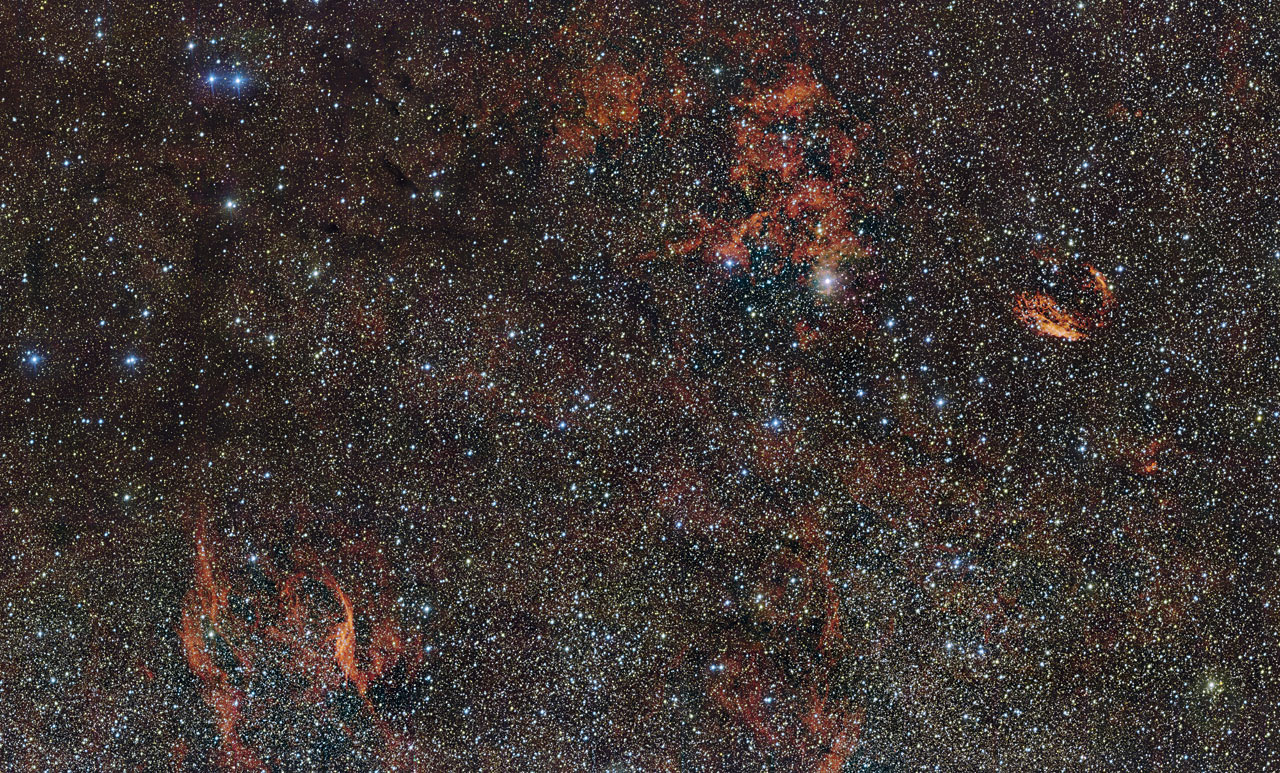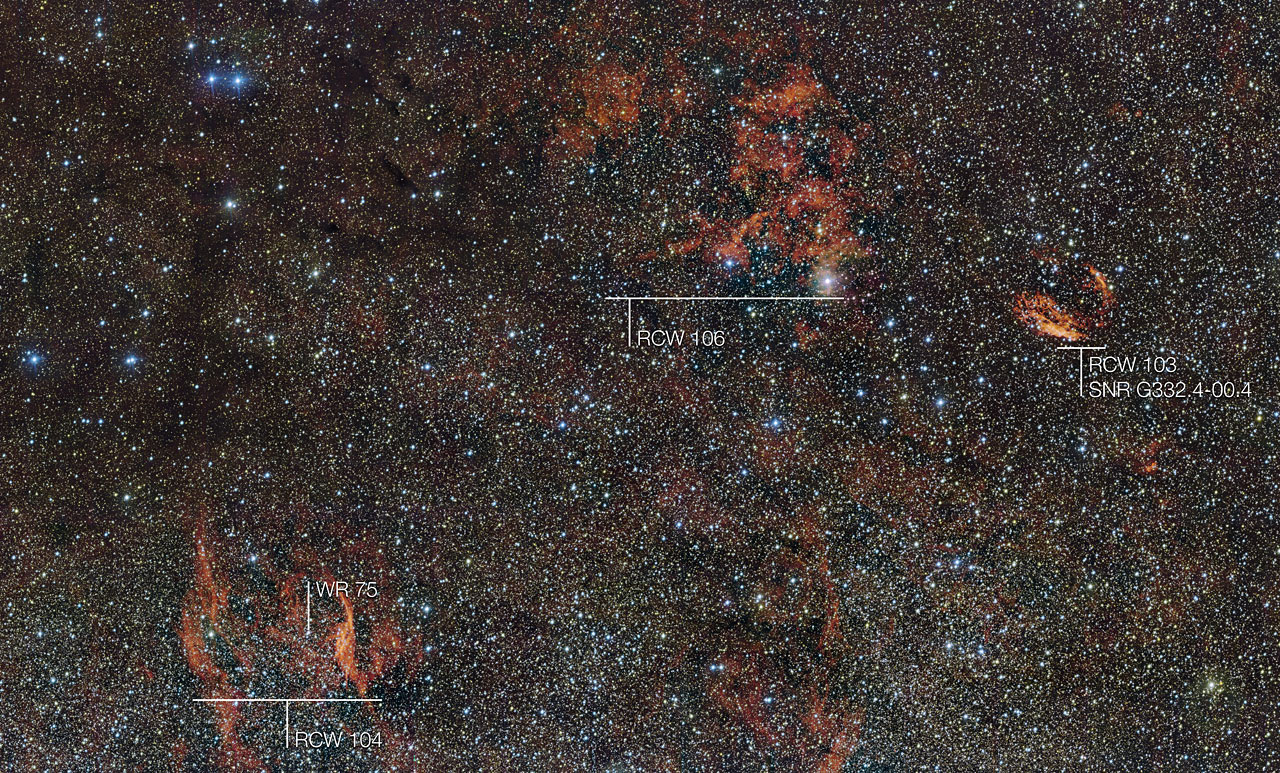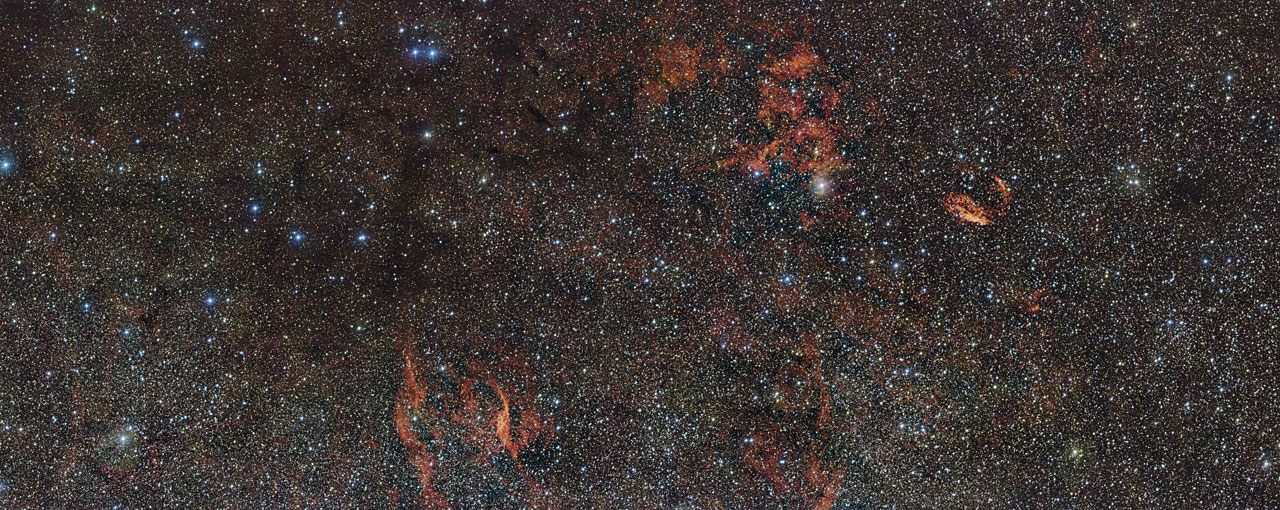'Buried Giants' in Space Set Crimson Space Clouds Aglow (Video, Photos)

Crimson gas clouds in space shine bright with reflected light in this new view from a European Southern Observatory telescope in Chile. The light comes from young stars that are buried deeply in a surrounding dust cloud.
The region is called RCW 106, and is located about 12,000 light-years away in the southern constellation Norma (The Carpenter's Square). This is the 106th entry in a catalog of H II regions, which have clouds of hydrogen gas that are being ionized (electrically charged) by nearby young stars. You can take a video tour of the dazzling new image, courtesy of ESO scientists, who dubbed the young stars as "buried giants" in an image description."
The image shows RCW 106 in the top center, as well as some unrelated objects captured by the VLT Survey Telescope at the Paranal Observatory in Chile. At right are remains of an old supernova, and at young left are some gas clouds surrounding a young star. The rest of the image is clouded with dust.
"Astronomers have been studying RCW 106 for some time, although it is not the crimson clouds that draw their attention, but rather the mysterious origin of the massive and powerful stars buried within," the European Southern Observatory wrote in a statement.
"Although they are very bright, these stars cannot be seen in visible-light images such as this one as the surrounding dust is too thick, but they make their presence clear in images of the region at longer wavelengths."
How these stars formed remain a mystery to astronomer. Stars like our sun began by pulling in gas. As the density, temperature and gravity increased, the combination created nuclear fusion. But these other stars -- known as O-type stars -- are many dozens of times more massive than the sun. Astronomers aren't sure how these stars gathered or pushed together the surrounding gas.
What is known about O-type stars is they come to be inside thick gas clouds (such as what are seen in RCW 106) and that they are so big that they consume their fuel in just tens of millions of years. They are also quite rare; only one in three million stars are O-types.
Breaking space news, the latest updates on rocket launches, skywatching events and more!
“None of those that do exist are close enough for detailed investigation and so the formation of these fleeting stellar giants remains mysterious, although their outsized influence is unmistakable in glowing H II regions like this one," ESO added.
Follow Elizabeth Howell @howellspace. Follow us @Spacedotcom, Facebook and Google+. Original article on Space.com.

Elizabeth Howell (she/her), Ph.D., was a staff writer in the spaceflight channel between 2022 and 2024 specializing in Canadian space news. She was contributing writer for Space.com for 10 years from 2012 to 2024. Elizabeth's reporting includes multiple exclusives with the White House, leading world coverage about a lost-and-found space tomato on the International Space Station, witnessing five human spaceflight launches on two continents, flying parabolic, working inside a spacesuit, and participating in a simulated Mars mission. Her latest book, "Why Am I Taller?" (ECW Press, 2022) is co-written with astronaut Dave Williams.


